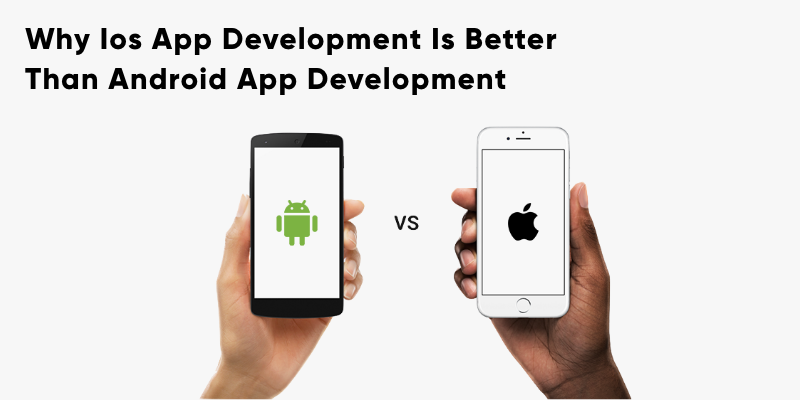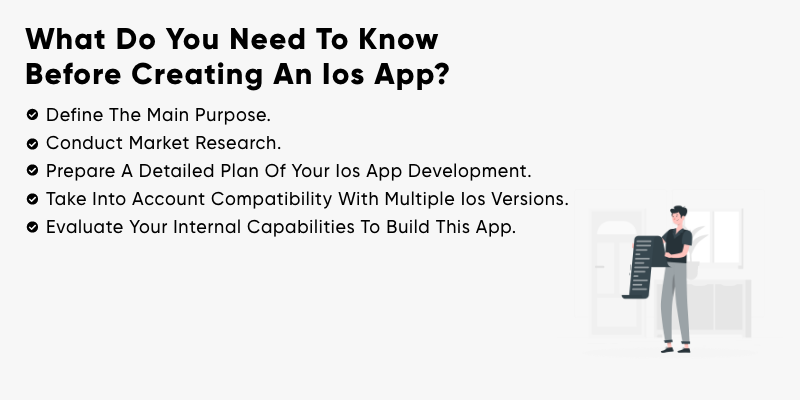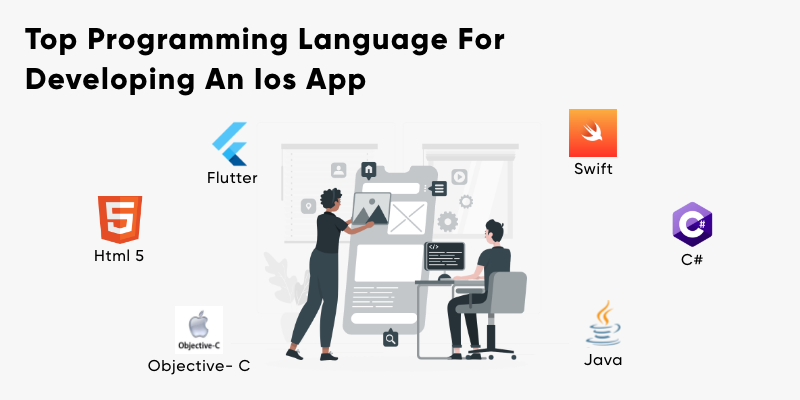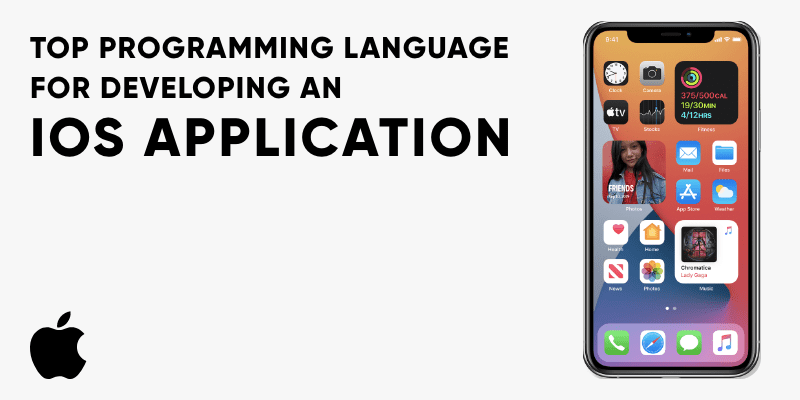Top Programming Languages for iOS App Development in 2025 (Complete Guide for USA Developers)
In 2025, the demand for iOS app development in the United States continues to surge. From startups and tech companies to healthcare, fintech, eCommerce, and AI-powered mobile apps, the iOS ecosystem remains one of the most profitable markets for mobile app developers.
Choosing the right programming language for iOS app development can make or break your app’s performance, scalability, and long-term success. Whether you’re building an iPhone app, iPad app, or Apple Watch app, the language you choose will determine your speed, UX quality, and ROI.
Why iOS App Development Is Booming in 2025
The U.S. app development market is more competitive than ever, with millions of businesses investing in custom iOS apps, Android apps, and cross-platform mobile applications. According to market research, Apple’s App Store remains the most lucrative platform for premium apps, mobile games, and business solutions.
Key factors fueling the growth of iOS app development in 2025 include:
Widespread adoption of 5G and AI-driven mobile apps
Demand for secure and privacy-first iOS apps
Integration of AR/VR and AI technologies in modern iOS apps
Growing usage of SwiftUI, machine learning, and cross-platform frameworks
Rapid innovation in fintech, healthcare, and eLearning apps
USA SEO keywords:
iOS app development USA, iPhone app development services, best programming language for iOS, mobile app developers USA, top app development company, Swift developers, Apple app development, hire iOS app developers, mobile app trends 2025, Android vs iOS app development.
Top Programming Languages for iOS App Development in 2025
Here’s a breakdown of the most popular and powerful programming languages for iOS app development that dominate the USA market in 2025.
1. Swift – The #1 Choice for iOS App Development (2025)
Swift remains the best and most popular language for developing iOS apps in 2025. Created by Apple, Swift is fast, secure, and ideal for building high-performance apps for iPhone, iPad, macOS, watchOS, and tvOS.
It supports modern syntax, memory safety, and AI-based development enhancements, making it a favorite among U.S. developers.
Key Benefits of Swift:
High performance and clean syntax
Seamless integration with SwiftUI and Xcode 15+
Strong community and developer support
Ideal for AI apps, healthcare apps, and fintech solutions
Excellent for enterprise-level mobile apps
USA keywords: Swift app development USA, iOS Swift developers, Swift programming 2025, mobile app programming languages, Apple Swift iOS app, iOS mobile development trends.
2. Objective-C – Reliable & Time-Tested Language
Although Objective-C is older, it still plays an important role in maintaining legacy iOS apps. Many enterprise and healthcare apps built in Objective-C are being updated or integrated with Swift.
Advantages of Objective-C:
Proven stability and reliability
Compatible with Apple’s ecosystem
Used for maintaining older iOS and macOS apps
Trending keywords: Objective-C development USA, legacy app modernization, iPhone Objective-C apps, Apple developer tools 2025, Swift vs Objective-C.
3. Kotlin Multiplatform – Ideal for Cross-Platform Development
Kotlin Multiplatform Mobile (KMM) is increasingly popular in 2025 for businesses that want Android and iOS apps with shared codebases. It allows developers to reuse business logic across platforms while maintaining native performance.
USA keywords: cross-platform app development, Kotlin mobile apps, Android and iOS development USA, hybrid app development company, KMM developers USA.
4. React Native – JavaScript Framework for iOS & Android
React Native, powered by Meta (Facebook), allows developers to build apps for both iOS and Android using a single JavaScript codebase. In 2025, React Native remains a top choice for startups, eCommerce apps, and social media apps.
Key Benefits:
Fast development cycle
Native-like performance
Large developer community
Compatible with both iOS and Android apps
Keywords: React Native iOS development, JavaScript app development, cross-platform app builder, mobile app frameworks 2025, iOS Android hybrid apps.
5. Flutter – Google’s Cross-Platform Powerhouse
Flutter, built by Google, is one of the fastest-growing app development frameworks in 2025. It allows U.S. developers to create visually stunning iOS and Android apps using Dart language and a single codebase.
Advantages of Flutter:
Native-level performance
Beautiful UIs using Material Design
Hot reload for fast testing
Ideal for MVPs, eCommerce, and healthcare apps
Trending keywords: Flutter app development USA, Dart language iOS, Flutter vs Swift, mobile app design trends 2025, iOS Android Flutter developers.
6. Python – Powering AI-Driven iOS Apps
Python is widely used for AI, machine learning, and data-driven mobile apps. While not native for iOS, developers use frameworks like BeeWare or Kivy to build iOS apps that leverage AI and backend processing.
USA keywords: Python mobile app development, AI healthcare apps, machine learning mobile apps, Python developers USA, data analytics in iOS apps.
7. C# with Xamarin (MAUI)
C#, via .NET MAUI (Multi-platform App UI), continues to be popular for building cross-platform mobile apps for iOS, Android, and Windows. It’s especially preferred by enterprise app developers.
Keywords: Xamarin iOS development, .NET MAUI apps, C# mobile app development USA, enterprise iOS app development, Microsoft app development.
Choosing the Best Programming Language for iOS App Development in 2025
The best programming language for your iOS app depends on your goals, project scope, and target audience.
Swift – Best for native iOS apps
React Native / Flutter – Best for startups or hybrid apps
Kotlin Multiplatform – Best for cross-platform projects
Python – Best for AI-based healthcare or data-driven apps
Objective-C – Best for maintaining legacy iOS apps
USA keywords: best programming language for iPhone app, top iOS app languages 2025, Swift vs Flutter vs React Native, hire iOS app developers USA, iOS development company USA.
The Future of iOS App Development (2025 & Beyond)
In 2025 and beyond, AI-powered mobile development, machine learning integration, blockchain security, and voice recognition apps will dominate the iOS ecosystem.
Voice search, 5G technology, and wearable apps are redefining the future of the mobile app development industry in the USA. The next generation of apps will rely heavily on:
Generative AI app builders
AR/VR medical and gaming apps
IoT-integrated healthcare apps
Voice-enabled personal assistant apps
Sustainability-focused and eco apps
Trending USA keywords: iOS app development future, mobile technology trends 2025, AI apps USA, app development cost USA, top mobile app developers, Apple app store ranking, Google SEO update 2025.
Although it may be done either by outsourcing or hiring an in-house developer, the iOS app development process can be a little complicated. The most important thing to consider is the programming language to choose for writing an iOS app, as there are numerous possibilities accessible, such as Swift, C++, Objective-C, and so on. There is a conflict between Swift vs Python as they both can be very useful.
Technology is constantly releasing new products to the market that have incredible features. Apps are now getting better thanks to the use of new technologies like IoT, AR, and VR. When combined with the iOS app development trend in 2022, all of these technologies have a significant impact. People will be confronted with a plethora of new trends in the present and future years.
Almost every online business now requires a mobile application. According to the most recent StatCounter data, mobile devices account for up to 56 percent of all online connections, putting them ahead of tablets and laptops. Furthermore, according to the same report, iOS devices account for 27% of them.
As a result, we have no doubts that iPhone app development is a worthwhile investment. You’ve come to the right place if you’re wondering which iOS development language is suitable for your project.
This article contains all of the most important information that you need to know about the top programming language for developing an iOS application, including:
- Why iOS App Development is better than Android App Development?
- What you need to know before creating an iOS app?
- Challenges in iOS App Development
- Which are the programming language for developing an iOS app?
Why IOS App Development Is Better Than Android App Development?

The following are some key differences between iOS and Android app development:
- Swift is used by iOS app developers, while Java or Kotlin is used by Android app developers.
- There are standardized screen sizes for iPhones and iPads on Apple products. Because Android devices come in such a wide range of screen sizes, you’ll need to focus more on interface design and case-by-case programming to assure device compatibility and operation
- Because of device fragmentation—the fact that there are so many different Android OS versions on the market—android apps take longer to develop. Important security updates arrive at different times on different devices, making it more difficult to maintain and build Android apps
- User demographics differ between iOS and Android apps, including age, income, hours spent on apps, geography, and so on. Apple users are typically younger and wealthier than Android users
- Continue marketing even when your business goes smooth
- Build a regular awareness that can even kindle your old users
Consider these differences while designing apps, examine your target audience, and decide whether you want to spend less time on development and maintenance.
iOS App Development is better than Android App Development as iOS is often easy to program for, for both new and expert programmers. iOS apps take less time to develop and are less expensive to design and maintain than Android apps. We have mentioned the latest development trends for iOS app for you so that your development in up-to-date.
Apple’s native programming language, Swift, is used by iOS developers, whereas Android developers commonly use Java and/or Kotlin. Swift is often more convenient and involves less coding work when developing native mobile apps. Less code equals lower development expenses in terms of both time and money for iOS devices like the iPhone and iPad.
What Do You Need To Know Before Creating An IOS App?

Creating a solid, comprehensive iOS app is a major task that requires careful consideration and planning. That’s why we’ve put together a quick but useful checklist of things you should keep in mind if you want your app to succeed.
Define the main purpose
Before you begin, think about why you want to build an application and try to answer a few simple questions like:
Why do I want to make this app?
What user requirements will your app meet?
Is there anything similar on the market? If that’s the case, what will make my app stand out?
When you answer these questions, not only will it be easier to convey them to users, but you’ll also be able to better plan future app development.
Conduct market research
The next step is crucial, yet many business owners overlook it. To convince people to want to download your application in the first place, you need to get to know them better.
You can create a profile of the average target user based on nationality, age, sex, or other factors using a survey or customer segmentation.
As a result of these steps, you will be able to design personalized marketing campaigns and increase the number of downloads.
Make a thorough plan for the development of your iOS app
If you’ve accomplished the first two steps, you’re ready to go on to planning. It should be as thorough as possible and include all relevant facts. A list of things to ask yourself when drafting such a plan is provided below: What technology will be most effective in the development of this app? What are some of the specifics of user interfaces? How will you assess your application’s success? What activities will enable you to realize your app concept? What are some of the security problems you should be aware of? Do you have any plans to make versions for other operating systems in the future? What objectives do you wish to achieve?
Consider compatibility with a variety of iOS versions
While iOS app development, keep in mind that not all iPhone users upgrade their devices’ operating systems on a regular basis. So, if your application is only compatible with the most recent version, and your user is using an older version, he or she may not like it and delete the app right away.
As a result, you should concentrate on making your application compatible with all available system versions. It will take longer, but believe me when I say it will be easier than persuading dissatisfied users to reinstall it.
Examine your internal resources for developing this app
The duration and expense of iPhone app development are determined by the app’s features and complexity. It’s usually a team effort, with iOS Developers, Frontend Developers, UX Designers, UI Designers, Graphic Designers, and even QA Developers and Project Managers involved.
Furthermore, this team should have a thorough understanding of the market as well as prior experience designing this type of application. As a result, you should decide whether you want to use your in-house team or outsource your iOS app development from the start.
Which Are The Programming Language For Developing An IOS App?

React Native
It Was Considered Infeasible for Commercial Use During the Early Stages of React Native’s Development. It was still unable to develop native mobile applications. Nonetheless, React-native has gradually grown in popularity, gaining community support and market share. You can use React Native to create high-quality mobile apps. Facebook released React Native, a cross-platform framework, in 2015. It is now one of the most widely used cross-platform applications. It creates native applications using JavaScript, allowing software developers to construct mobile apps utilizing website technologies.
| Pros | Cons |
|---|---|
| Provides for interpreting the source code and quickly converting it to the native elements | Compatibility and debugging issues |
| Enables front-end web developers to build cross-platform mobile apps without a need to learn backend programming language | Risk of low quality and performance |
| Allows to work on video and image editing | Lack of some components |
| Fast-growing popularity | |
| Enables developers to write modules in programming languages such as C, Swift, and Java | |
| It has a large community and offers a fast development process | |
| It has a simplified UI and can be refreshed quickly |
Flutter
Flutter is an app Software Development Kit (SDK) that comes with ready-to-use widgets and features. Google built it in 2015, and it was formally launched in 2017.
This tool makes it simple for Flutter developers to create aesthetically appealing, natively compiled mobile, web, and desktop apps with only one codebase.
| Pros | Cons |
|---|---|
| It is time and cost-efficient and provides a fast development process | It has a small community with a less talented pool |
| It is a free and open-source language that provides full customization and full rendering | A small number of libraries |
| It is easy to maintain and develop new features with this language | Relatively big app’s size |
| It requires only one codebase for two applications | Lack of standard development guidelines |
| It provides its own widgets and its architecture is based on the popular reactive programming | |
| It enables to build good looking custom UI |
Swift
Swift is a programming language used to create apps for macOS, iOS, iPadOS, watchOS, and tvOS. It was built by Apple in 2014 to replace Objective-C. Swift is designed to operate with frameworks like Cocoa and Cocoa Touch, as well as the huge Objective-C codebase for Apple products.
Swift is the 17th most popular programming language in the world, according to the Stack Overflow 2020 Developer Survey, with 5.9% of developers using it.
| Pros | Cons |
|---|---|
| With basic syntax and grammar, the development process is quick. | Older iOS versions aren’t supported. |
| Open source programming language makes it simple to read and write code | For developers, the language is still new |
| The management of the code is simple | Interoperability issues with third-party software |
| Multiple devices can be supported | A smaller pool of talent |
C#
One of the most versatile and open-source programming languages for developing iOS mobile apps, as well as the most user-friendly for beginners and intermediate developers. It uses an extended version of C called Objective-c for Apple for the development of iOS apps.
C# is a high-level, object-oriented, general-purpose programming language that is mostly used in the development of Microsoft applications. It is the world’s seventh most popular programming language, and it gives programmers a great learning experience.
| Pros | Cons |
|---|---|
| With basic syntax and grammar, the development process is quick. | Older iOS versions aren’t supported. |
| Open source programming language makes it simple to read and write code | For developers, the language is still new |
| The management of the code is simple | Interoperability issues with third-party software |
| Multiple devices can be supported | A smaller pool of talent |
Objective- C
This App Programming Language, which precedes Swift, was created as an extension of the Object-oriented Programming Language C, with the same properties. It was one of the most useful programming languages at the time, but it is now a general-purpose programming language that is still compatible with Mac OS and iOS, and it was the primary iOS coding language before Swift.
In terms of readability, coating, execution time, code maintenance, and so forth, there is always a comparison between Swift and Objective-C.
| Pros | Cons |
|---|---|
| It provides a long-term experience | App development for iOS has a limited set of features |
| Dynamic type gives you more options when it comes to using classes | It has a number of security flaws |
| Older versions are fully supported | The number of people who utilize Objective C is decreasing |
| A language that is mature and consistent | The code is tough to understand and so to learn |
JAVA
Java is a general-purpose, object-oriented programming language. However, the most important feature of this programming language is that its code does not require recompilation and may be used on any platform.
Java is now the most popular programming language, with over 9 million users. As a result, it ranks sixth among the world’s top ten most popular programming languages.
| Pros | Cons |
|---|---|
| Suitable for native and cross-platform development | It provides poor performance |
| It has a huge community with a wide talent pool | It has a complex code that makes it difficult to work with this |
| It is open-source and flexible | It is a tech-heavy language |
| The language is scalable and can be updated | It requires significant memory space |
| Automatic garbage collection |
HTML 5
This language is mostly used for structure and body development for any type of work, whereas CSS is used for design. Moreover, HTML 5 is used for the development of the body structure in iOS app development. As a matter of fact, HTML 5 is the latest version of HTML technology, which is used to create and present web pages that define their own meaning and structure.
Interestingly, HTML5 knowledge can also be used to develop iOS apps using tools like Apache Cordova or the aforementioned Visual Studio for Mac.
| Pros | Cons |
|---|---|
| It allows for cost-effective and multi-platform development, as well as improved page ranking. | It can only be accessed using contemporary browsers and video support is diverse. |
| It is fully consistent across a variety of browsers. | There are various concerns with media licensing that should be considered. |
| For business intelligence, it is the best mobile access | The responsiveness of several devices can cause issues |
Challenges In IOS App Development
Choosing the right coding language for iOS app development, building & managing these projects, their support, future scalability, and so on all present unique issues.
There are numerous features and options available when developing apps for iOS and other versions of product design. If the application’s memory is overloaded with features and functions, it will become heavier and more difficult to use. This could make the project much more difficult.
Furthermore, because Apple products are updated frequently, you should design tools that are compatible with all versions of operating systems. Many errors will need to be corrected, and new parameters will need to be introduced on a regular basis.
Different iPhone and iPad models have different criteria that could affect how well they work. As a result, the development process should consider the fact that all iOS apps must be compatible with all Apple products, as well as the appropriate language or framework for iOS development.
Wrapping Up
Choosing the appropriate programming language for iOS is a key decision that can have a significant impact on the success of your project. As a result, you should clarify your requirements and expectations before deciding on the ideal solution for you.
Looking for the appropriate technologies for your iOS application as well as competent mobile developers who can deliver on their promises?
Please get in touch with us. Mobile consultants and mobile developers specializing in various technologies can be found at Echoinnovate IT. We are the leading mobile app development company with over a decade of experience. To determine the best solution for you, schedule an appointment with us.
FAQs
How much does it cost to build an iOS app?
The cost of an app will also depend on who is developing your app. If you decide to take on the project yourself for a simple app, you might be able to get away with using a drag and drop app builder and a $5,000 budget. If you need a more robust app and want to hire a top firm it can cost up to $500,000+. However, most mobile apps generally fall between $100,000 and $300,000
How do I find the best iOS mobile app development company?
iOS developers specialize in building apps for Apple products. Pick the firms that can offer services throughout the app development process including app design, building, testing, and the eventual launch
Can you make iOS apps on Windows?
No, you cannot build iOS apps on Windows because Xcode, the IDE used for designing, developing, and deploying iOS apps, only runs on macOS. However, you can still deploy, run and test your iOS application directly from Windows using Microsoft’s app builder Xamarin.



